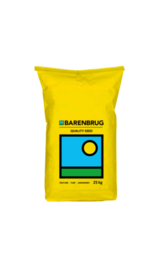The Faba bean plant is tall (can grow to over 1m under optimum conditions), erect and multi-stemmed from basal branches. It has a well-developed taproot which produces an extensive fibrous root system. Plants can flower profusely, and flowering may last for up to 5 weeks, depending on soil moisture and air temperature. However, as few as 10-20% of flowers produce pods as flowers require cross-pollination.
Faba bean is best suited to well-structured soils in medium to higher rainfall districts. It tolerates some waterlogging, competes well with a range of weeds and is relatively easy to harvest. Pods containing two to three seeds form from about 20cm above ground level and continue to nearly the top of the plant. A distinctive feature of the crop is that it turns black at maturity. Faba bean roots need to be inoculated with the appropriate strain of rhizobia (Rhizobium leguminsarium), allowing it to fix nitrogen in the soil. This bacterium will colonise the plants roots, stimulating root nodule development. It should be inoculated when the faba beans are being grown in a field for the first time or where they have not been grown in the past 4 years.
Faba beans are used primarily as a cover crop. Faba beans can also be used for silage and seed production.



